Thursday, February 27, 2025
About Raindrops
If it seems I've been obsessed with raindrops the past couple of years, there's a reason, and I've never discussed why online. Until now, it wasn't really my story to tell.
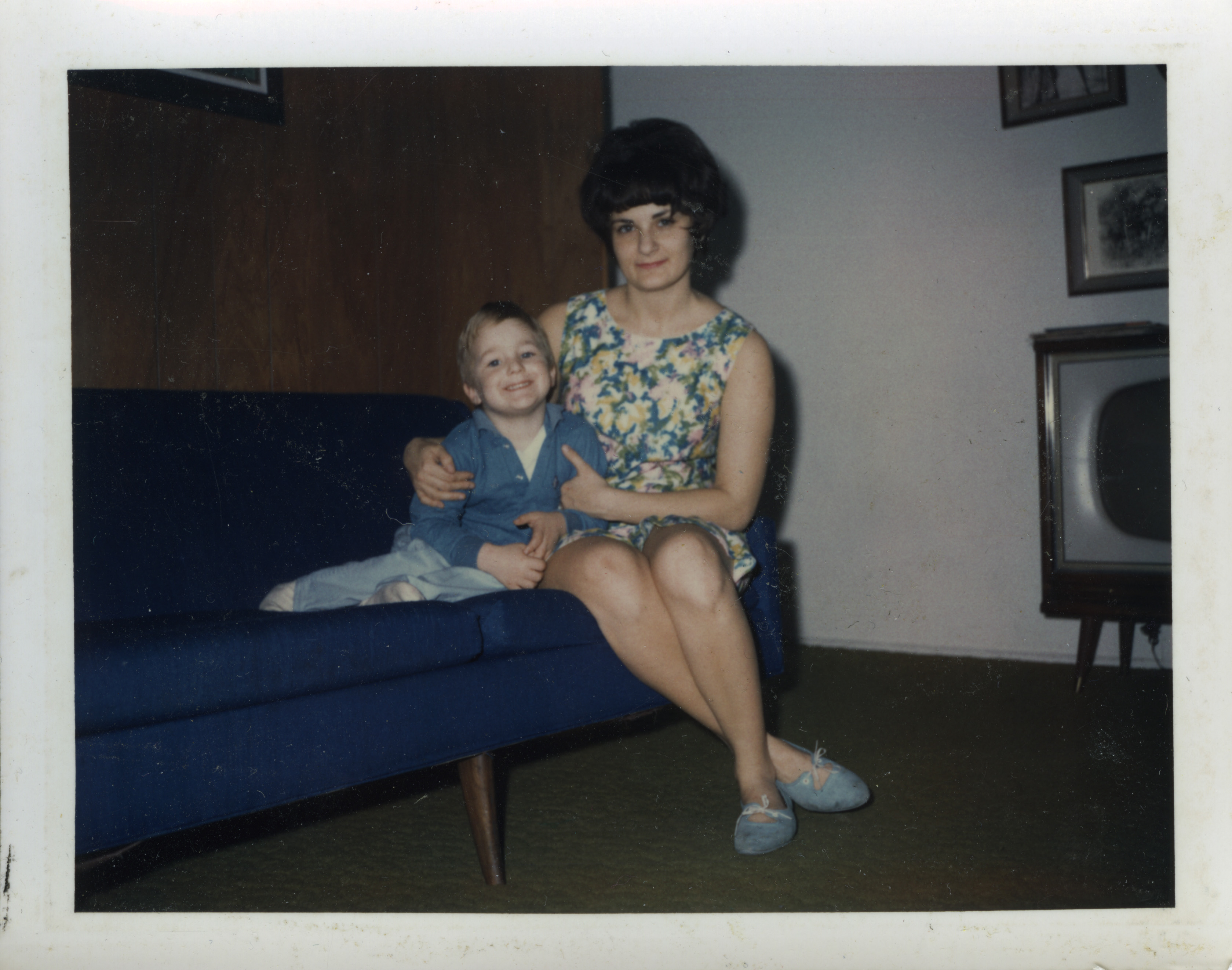
My mom moved in with us three years ago. She had mobility issues, and her second-floor walk-up condo in Florida didn't fit her needs any more, so we moved her in with us back in New Jersey, in the house that she and my dad bought in 1978, which my wife and I bought from them in 2003.
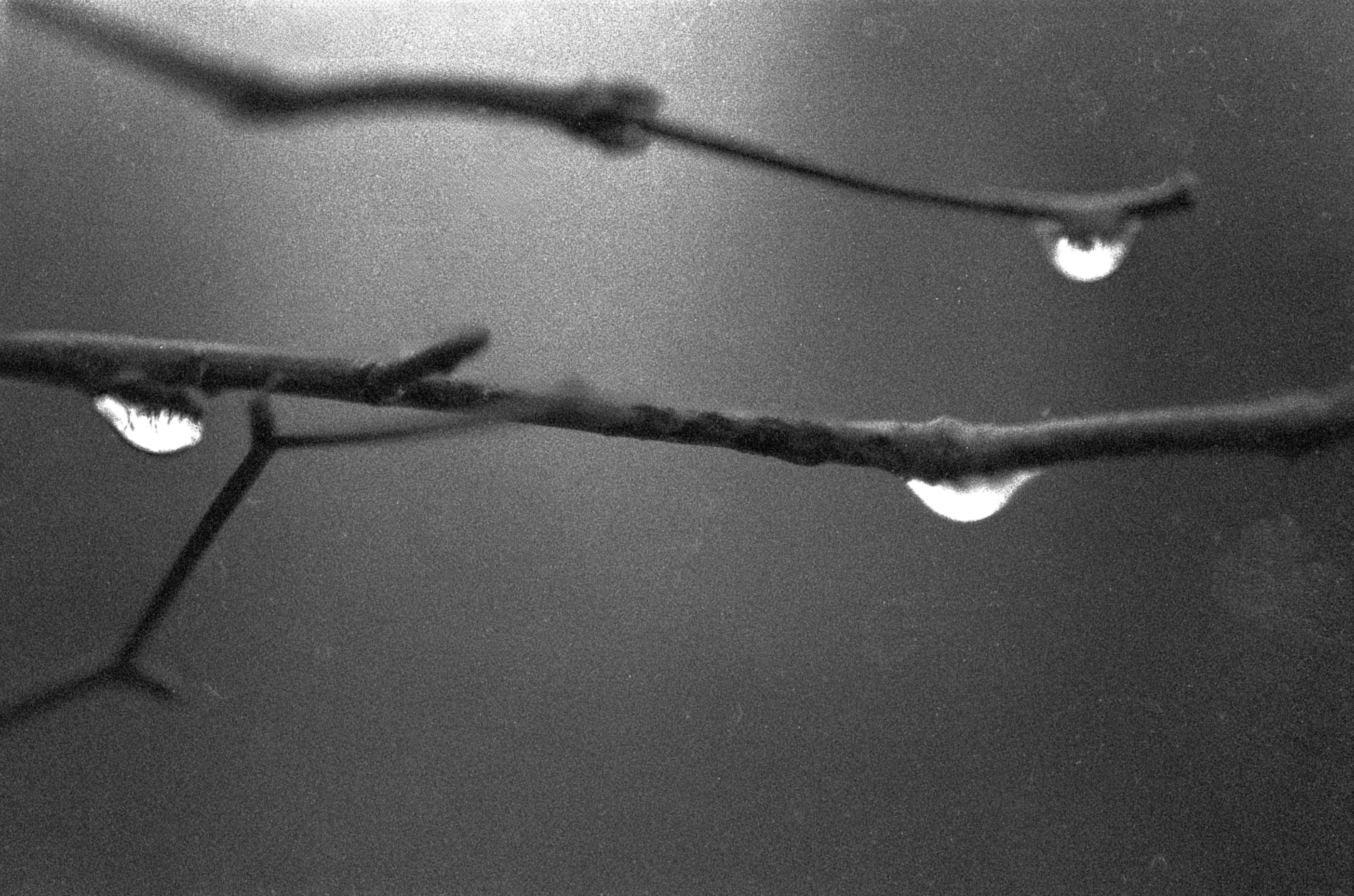
She was housebound from the start, but could maneuver inside the house. I was her caregiver, but it wasn't that onerous, basically making her dinner and fetching things occasionally.
But over time, her latitude shrank. First to go was sitting at the kitchen table for dinner. She could still go to the kitchen and make herself lunch with whatever food was available on the refrigerator door (not so much in the rest of the fridge), but consumed all her meals in the lift chair she used in the family room. And with the passage of time, her walking with her walker slowed down and got more precarious. With every decrease in her capabilities, there was an increase in my need to provide her with help and to stay close to home.
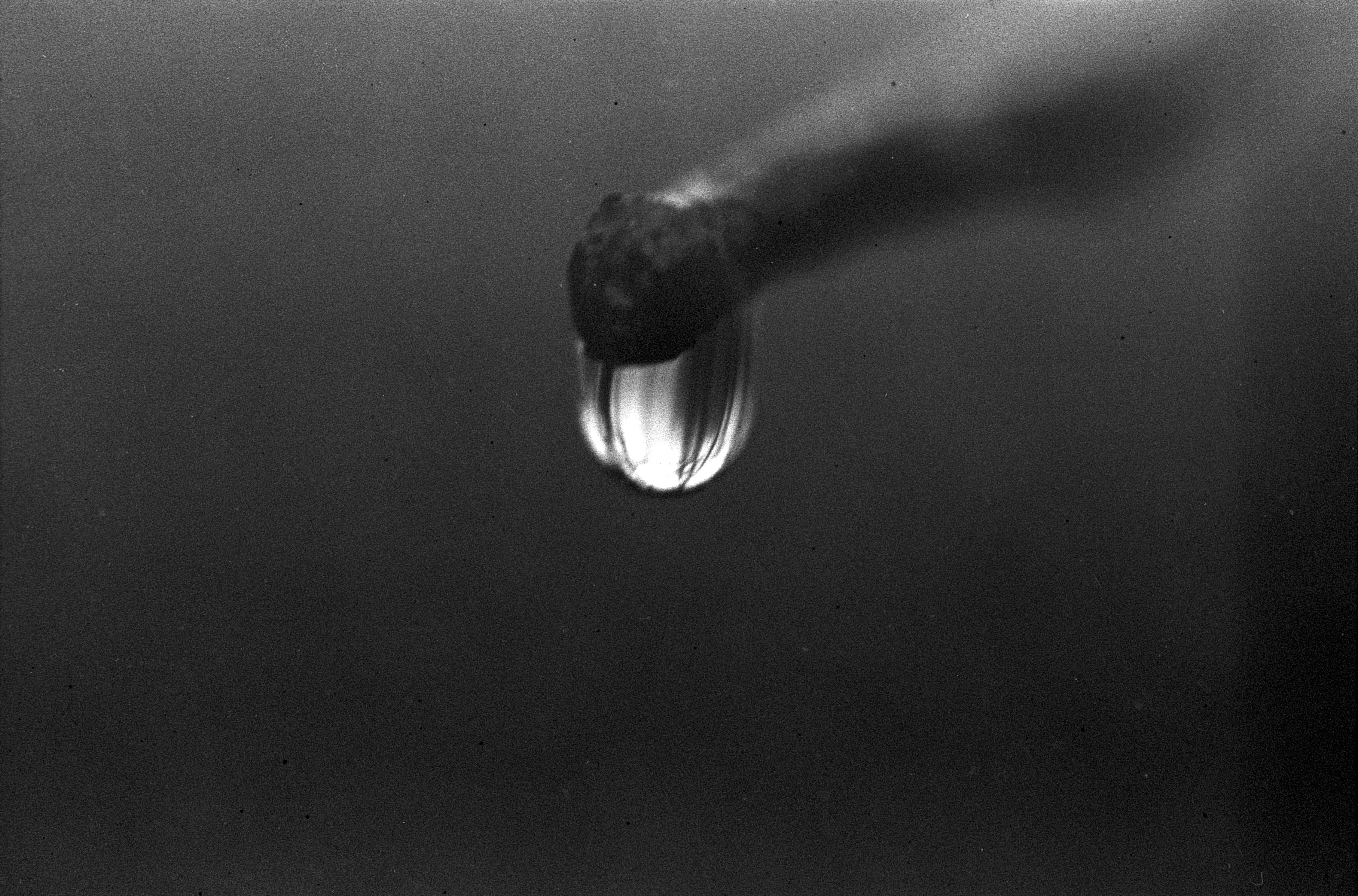
In late October, she went into the hospital to deal with an infection that was discovered by some bloodwork the visiting nurse who treated her asked for. She came out in early November with a cancer diagnosis. Things started to decline faster from that point, and in January she entered hospice care.
She passed away on February 26, 2025, with her two living children by her side.
It has been difficult for me to get out of the house and go down the shore the way I used to as my mom's condition declined. The series of shots of raindrops started as a way to keep shooting something while not leaving my property, stealing 15 minutes or so to run off an entire roll of film after a rainstorm. And the worse her condition got, the more important it was for me to stay home or close to home, and my ability to travel shrank to pretty much nothing. But I could still steal 15 minutes and shoot some raindrops occasionally.

This project has been so closely tied to my caregiving responsibilities and my mom's condition, and now that she's gone, much of my constraints have disappeared (I still have caregiving responsibilities for another family member, but they're less imposing right now). I love the work, and expect to return to it, but not right now. It's still a bit raw, a bit too connected to a difficult time in my life. Thanks to everyone, especially my friends on the social network Glass, for your encouragement with these photos. It's been a way to maintain a bit of my sanity as the rest of my world kind of closed down.
Posted at 12:21 PM
Link to this entry
Monday, November 4, 2024
Offseason Issue 2
I made a new zine. Offseason, Issue 2, is devoted to postcards. When you would go to a motel on the Jersey Shore, there would be postcards in the desk showing the motel, which you were welcome to send to friends and family. This zine pretends to be a collection of such postcards. They are a mix of motels (mostly), businesses (a few), and attractions (a couple), and mostly from New Jersey. The zine is presented as a booklet from which you can remove the postcards and send them, much like little booklets of postcards you can get in gift shops on the shore. It’s bound using that sticky stuff that’s used to make pads of paper. There are 20 postcards included. I printed the cards myself on an Epson 3880 printer on linen postcard paper. I did my best to replicate the look of 1950s motel postcards with a modern process. I’m charging $12 to ship to the US, $16 elsewhere. It’s available from my Etsy site.
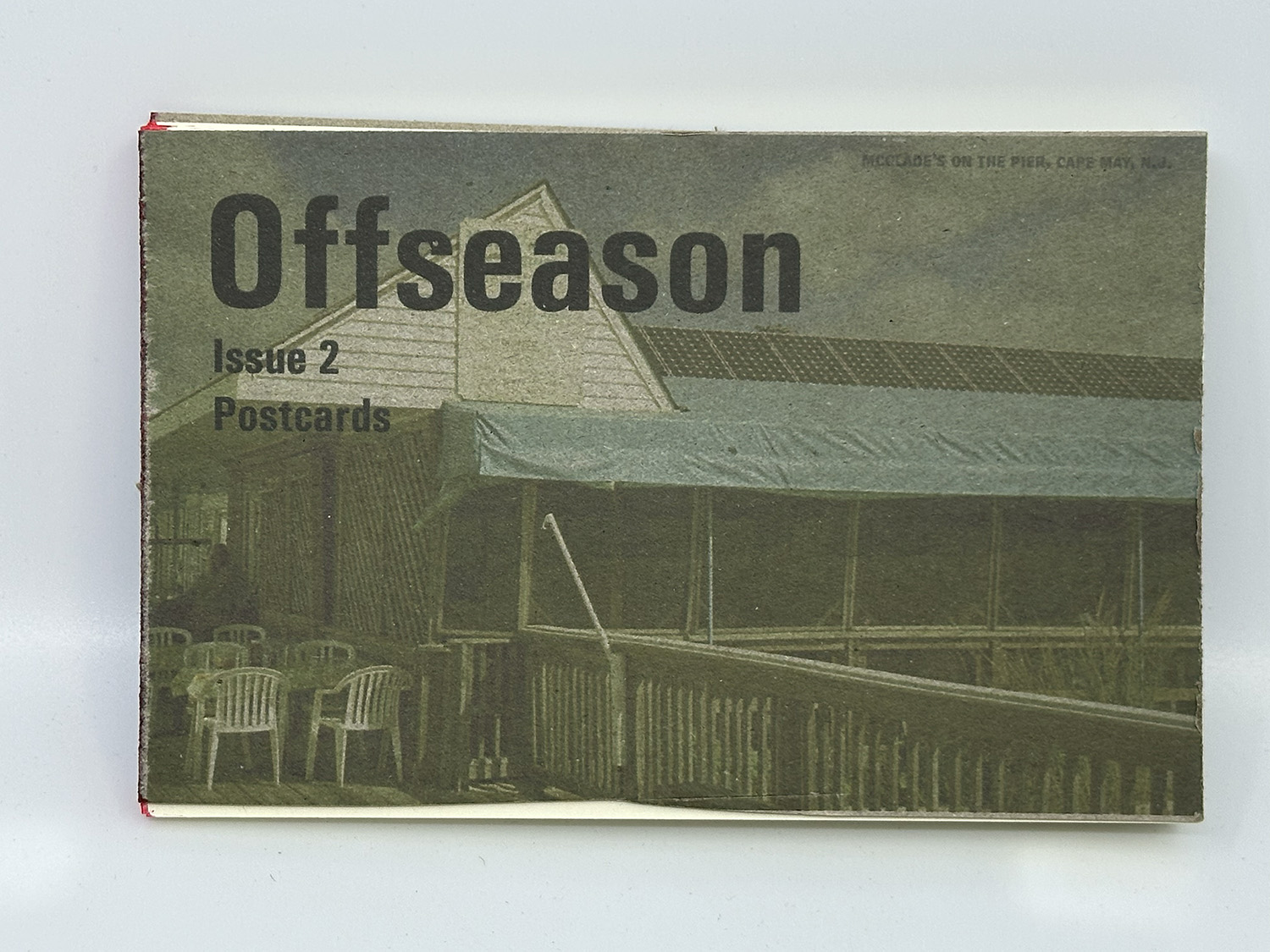
Posted at 2:38 PM
Link to this entry
Sunday, November 3, 2024
Polaroid Week Autumn 2024 — Freedom
As we approach the election of 2024, something that is on everyone’s minds is freedom. As in, what does it mean, and will we still enjoy it after the results of the election are announced. Yale professor Timothy Snyder has written a book on the subject called “On Freedom”. I’ve read it twice this season. It’s one of the most important books I’ve ever read. For this Polaroid Week, I’ve created pictures based on interpretations of points made in his book.
Snyder posits that there is a difference in conceptions of freedom, one of which is negative freedom, which can be thought of as “freedom from”, and positive freedom, or “freedom to”. Postive freedom is about enabling free people to live their lives to the fullest, and negative freedom is about preventing anything from preventing you from doing whatever you want. Positive freedom leads to democracy. Negative freedom leads in the opposite direction.
There are five components to positive freedom in Snyder’s estimation. The first of these is Sovereignty. Each person is sovereign over their own selves. They are responsible for their own being, their own decisions, their own beliefs. The task of a parent raising a child is to teach them to be a sovereign being, capable of judging right from wrong and living their life in a way that is true to themselves.
My first entry for Polaroid Week represents Sovereignty with a mixed media piece, one of my construction paper people on Polaroid Retinex Type-I film, with a piece of construction paper glued onto the frame so it extends outside the circular frame of the Retinex film.

The second component of positive freedom in Timothy Snyder’s new book “On Freedom” is Unpredictability. Corporations and politicians wish to make you predictable. Surveillance capitalism takes advantage of the capabilities of the Internet to track everything you do, use that to build a profile about you, and predict your desires for consumer products, which politicians you support, your sexual orientation, basically everything about you so that they can take advantage of that predictability to sell you something, either products or politics. A free person is unpredictable, and cannot be reduced to a list of attributes. Unpredictability is therefore the second component of positive freedom.
My second entry for Polaroid Week represents Unpredictability with the combination of two photographs. The photographs have been sliced halfway through, and slid together to form a single work.

The third component of positive freedom in Timothy Snyder’s new book “On Freedom” is Mobility. Originally in America, this was perhaps about moving to the frontier, as the country expanded, and having the ability to build one’s own life in new places. After the frontier closed, mobility in America became more about social mobility, the ability to move up the socioeconomic ladder and join the middle class. Increasing wealth inequality leads to less ability to do so; the ability to be mobile is a critical part of positive freedom.
My third entry for Polaroid Week represents Mobility with the addition of a motion blur filter from the Polaroid Spectra family of cameras, part of the Special Effects Filters package. I placed this over the lens of my Mint SLR-670X with I-Type support as I shot a portrait using Polaroid Retinex film.

The fourth component of positive freedom in Timothy Snyder’s new book “On Freedom” is Factuality. To quote Snyder, “Freedom is not us against the world but us within the world, knowing it and changing it.” In order to exist within the world as free people, we must understand the world. The ability to accept facts and truth are crucial to freedom. Lies are the foundation of negative freedom. To be truly free, we must be fact-oriented. Those who lead us by lies lead us into unfreedom.
My fourth entry for Polaroid Week represents Factuality by using the page of a dictionary as the basis of the “face” of one of my Retinex portraits. The dictionary defines the meanings of words. Practitioners of negative freedom will often redefine words or use them to mean things that they do not actually mean.
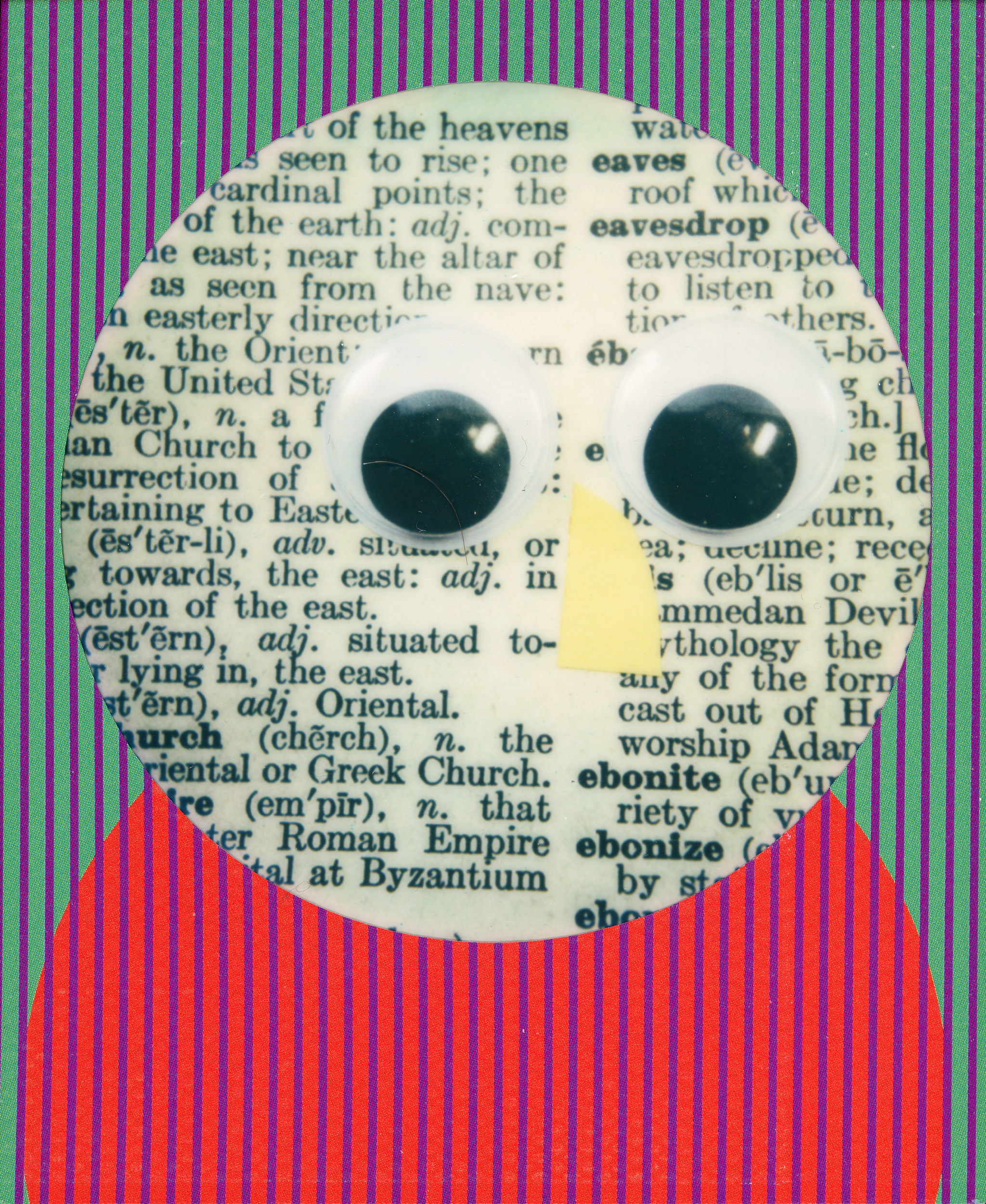
The fifth component of positive freedom in Timothy Snyder’s new book “On Freedom” is Solidarity. We cannot claim freedom for ourselves and deny it to others. Freedom only makes sense when we recognize in others the things we see in ourselves. America’s motto is E Pluribus Unum; Out of Many, One. What is that but an expression of solidarity? Those who dehumanize others are not interested in your freedom. Unions place solidarity at the top of their principles. We cannot be free unless we are all free.
My fifth entry for Polaroid Week represents Solidarity by photographing all my previous entries, plus a couple others, using the same Retinex film to give the impression of a single body made up all other bodies. I used the hexaprism filter from my Spectra Special Effects filter pack with my Mint SLR-670X Ming Edition I-Type camera.

This ends my Polaroid Week series for Autumn, 2024. I hope this has piqued your interest in Snyder’s book and made you think about freedom in perhaps a different way than you have before. Snyder’s book is available at https://timothysnyder.org/on-freedom. If you’re American, election day is in a few days. Vote. Vote for freedom. Vote for freedom for all of us.
Posted at 12:48 AM
Link to this entry
Friday, September 27, 2024
The First Hit is Free
Twitter methadone networks are driving me crazy.
Razorfish laid me off a year and a half ago after working there for 13 years, but I landed a new job pretty much immediately with some of my fellow victims (seriously, I was asked to join before I even rolled off the old job). We had a great team, spent a year spinning up a new digital agency, and then it ended. It was a stupid ending and if you really care, buy me a beer and I’ll explain it offline. Anyway, I’ve been mostly unemployed since February. I had seven weeks of work back with the remnants of my old team at Razorfish back in May and June helping them meet a deadline, but other than that, I’ve been looking for work. The general unemployment rate is like 3.4%, but the unemployment rate for web developers is Fuck you, you really think this job we posted to LinkedIn is real? HA HA HA HA HA You’re an idiot! And the demand for 61 year old web developers with 31 years of experience, more than anyone this side of Tim Berners-Lee, is like negative. With Google and Facebook and Amazon laying off all the web developers they stockpiled when the pandemic started, anyone who needs a developer has their pick, and most won’t pick someone with my level of experience when they can get someone cheaper. I had planned on retiring at 62 anyway. I turn 62 in ten months. So I’m still looking because I’m still collecting unemployment insurance and the state kind of insists that you actually look for work if they’re going to pay you to not work, but if I don’t find anything between now and next month when it runs out I’ll just say fuck it and retire. Seems to me like the best way to find a job right now is through friends anyway. I mean it’s always been that way, but with all the AI/ML pre-scanning bullshit that resumes are being put through to eliminate all but a few applications and the several thousand applications for every single job out there, it’s like the only way to find a job right now.
So anyway, my life doesn’t have much structure right now.
I’ve come up with a list of things I want to do, and so far I’ve done exactly zero of them. One big reason is that I spend all fucking day in front of the computer obsessively checking on my Twitter methadone networks, Mastodon and Bluesky. It’s not healthy. With no structure in my life, I find myself terminally online, refreshing every few minutes to get the latest three posts to show up. It’s no way to live.
So at the beginning of September, I decided to do another dopamine detox. I did this back in March, and I wrote a brief something about it at the beginning of April. The stuff I wrote then still applies. Feel more present in my real life, not having my attention sucked up so much, blah blah blah.
So I’ve been relaxing this past month. I make breakfast for my father-in-law when he gets up in the middle of the afternoon. I talk with my mom about whatever crazy ass YouTube or TiVOed political thing she’s watching (usually Colbert or The Daily Show). I’m reading books. I’m kind of taking a course about web components that I backed on Kickstarter, because hey, maybe I’ll find a job where it’ll be useful and I need to keep up with the latest developments in web development technology. I’ve been going out some mornings before the live-in parents wake up to shoot pictures. I play Two Dots and Words With Friends. I still spend more time in front of the computer than I should reading the Washington Post and Talking Points Memo and obsessing about whether the U.S. has a future as a democracy or not.
I’ve been checking the networks again the past few days, although without posting. It still fucks with my head.
One way I was imposing some structure on my life was posting photos on my Twitter methadone networks three times a day at roughly the same time each day. I don’t think I’m going to do that any more. I’ll still post photos, but not on a schedule. That was fucking me up. Participating in things like the Shitty Camera Challenge was also kind of screwing with my head. All the pressure I felt was self-imposed, but I need to stop doing it. I need to get past my self-imposed sense of obligation in regards to these networks, and if I can’t, I need to remove myself from them.
As I mentioned in April, I’ve been online on social media networks of one sort or another for basically my entire adult life, a good 40 years now. It worked for me. And now, maybe it doesn’t. I’m trying to figure that out.
Posted at 1:50 AM
Link to this entry
Thursday, August 8, 2024
The QODOSEN DX-286 on FM: A Contrarian Opinion
Over on Mastodon, one of the social media networks I’m on (basically Twitter without the assholes), Matt Blaze mentioned that he was very impressed with the FM reception of this cheap Chinese portable receiver, the QODOSEN DX-286. I’ve dabbled in distant FM reception for many years, and especially the past few years gotten into serious DXing there with my Elad FDM-S3, an SDR which can record the entire FM band. The DX-286 is available on Amazon for $80. Even an umemployed semi-retired layabout like me can afford that, so I bought one.
I don’t hear it.
The DX-286 has some nice features for FM, like several bandwidths that will allow you to separate closely-spaced stations. I live in the shadows of New York City, so the FM band is pretty full here, but the radio with its whip antenna does not fill the band in the way my Elad with its external antenna does. Fair enough, the Elad is a $2000 radio. But it doesn’t even compete with a 30 year old GE SuperRadio II that cost me $50 30 years ago (so a lot more comparable in price given inflation). I modified the SuperRadio to have a narrower bandwidth, 150 kHz, so that I could separate WXPN 88.5 Philadelphia from more local WBGO 88.3 Newark. It does that admirably. Similarly, I can get stable reception of WHYY 90.9 Philadelphia despite the presence of WFMU 91.1 East Orange (granted, not a blowtorch like WBGO), and WMMR 93.3 Philadelphia with next door 93.1 WPAT Paterson (a strong signal here), all with the attached whip antenna. None of the Philadelphia stations are audible at all with the QODOSEN DX-286 with its whip antenna. Hell, my 40 year old Sony ICF-2001 is a hotter FM receiver than the DX-286. I bought that radio when I was living in State College, PA, in the center of Pennsylvania, and I was able to basically cover the state with it using its whip antenna, hearing stations from Pittsburgh, Wilkes-Barre, Erie, Philadelphia, Harrisburg, and even Washington, DC, on a regular basis.
I have to conclude that the reputation of the DX-286 as a hot performer on FM is overblown.
Posted at 2:04 PM
Link to this entry
Wednesday, April 24, 2024
Chocolate Tuba
A couple of years ago, I registered a domain name and put up a placeholder that consisted of the site name and a photograph that illustrated it. Now that I’m not working, I took some time and actually built the site.
Chocolate Tuba is about music that crosses cultures, combines disparate genres. Two things that are great individually, but you would not expect to see them put together. And yet, they can be surprisingly delightful!
The idea here is that music that combines genres unexpectedly is like a chocolate tuba.
I built the site using Eleventy, a static site generator. My first attempt a couple of years ago was with Gatsby, but once I saw the code it generated, I discarded it. There was a lot of crud that I didn’t write that was necessary for the site to operate. I didn’t like that. Eleventy doesn’t insist on using a particular Javascript framework like React; in fact, you don’t have to use Javascript at all. I have a bit of Javascript in the build process, but the output doesn’t include any all, because it simply isn’t necessary. All I’m doing here is writing a little text and including an embedded YouTube video (using the no-cookies approach to embedding) of music that fits the criteria established, that the music combine two approaches or genres or cultures in a way that is unexpected and that works.
Yesterday I saw a post shared a few times on social media about how the web used to be "fun and punk and ~weird~"". Now that I have some free time on my hands, maybe I can help bring a little more fun, punk, ~weirdness~ back to the web.
Posted at 6:35 PM
Link to this entry
Tuesday, April 2, 2024
Social Media Holiday
I took the last month off from my Twitter subsitute social media networks, Mastodon and BlueSky.
It was wonderful.
These firehose-of-posts networks serve as distraction engines, sucking up my attention and making it hard for me to focus on anything else.
Social media has been part of my life for basically my entire adult life, going back to my early 20s when I spent all my time on Usenet.
It was useful to get away from it. I found myself being more present in my daily life. I took an improv class, and I didn’t tell the entire world about it as it was happening.
I’m dipping my toes back in now. I don’t feel like I can let myself dive in head first and go back to how I used to use these networks, though. BlueSky, in particular, annoys the fuck out of me with how its clients work, taking me to the most recent post and then forcing me to remember where I was before. That’s a basic violation of the user experience need to minimize cognitive load, and it makes me want to use it less. For Mastodon, using Ivory as my client means that I can catch up at my leisure. I intend to take it up on that, only checking in a few times a day instead of switching to the program every few minutes to read the most recent three or four posts.
Social media is made up of people, and if I follow you, there’s a reason I follow you. So I don’t want to lose track of that. But I can’t deal with the constant theft of attention. It’s like having a hyperactive hyena baying in your ear every few minutes. I can’t deal with that right now. Either I make social media work on my own terms moving forward, or I have to walk away.
Posted at 12:04 PM
Link to this entry
Wednesday, December 6, 2023
Buying a Digital Camera
I am buying a digital camera.
This is not a big deal for most people. It’s the default these days. You buy a camera, it’s digital.
The last serious digital camera I bought was a Canon Digital Rebel. It was 2004. I bought it because I thought that if I shot more, I could get better at photography, and I could shoot more with a digital camera than I could afford to with a film camera. The camera cost me about $1000 if I recall correctly. What I found with the camera was that I was shooting a lot more, but my photographs were getting worse. I would spray and pray, which is to say, take a lot of nearly identical images and hope one of them worked. Very few of them did. This was highlighted on a trip we took to Florida to visit my parents. We spent a day at the Kennedy Space Center. I brought my Digital Rebel, and also brought this cheap plastic camera I had found in a thrift shop in Levittown, Pennsylvania, for a dollar, a (1960s vintage original) Diana. This was before Lomography came out with their version of the camera. The battery in the Digital Rebel died after three pictures, so I was limited to just using the Diana for our visit to this iconic location. Weeks later, when I got the film developed, I was awestruck by the photos. The heyday of the space program was the 1960s, and the photos I took looked like they could have come straight from that era. I was more impressed by the photos I took with my one dollar camera than with anything that had come out of my thousand dollar camera. From that point on, I shifted back to film.
I shot for the first few years on toy cameras like the Diana. I had a Holga, a Fujipet, an Agfa Clack, a Superheadz Blackbird Fly fake TLR, and some of the goofy cameras coming out from Lomography. I also got a Lomo LC-A. Lomography’s slogan “don’t think, just shoot” worked for a little while, until it didn’t. I found myself slowing down and taking photographs more intentionally. I started to get into Soviet cameras like the Kiev 88cm and Kiev rangefinders. I got back into Polaroid, starting with my dad’s old 250 that shot peel-apart film, and getting a succession of SX-70s. The Kiev rangefinders led to me getting a couple of Contax rangefinders, one pre-war that formed the basis of the Kiev camera, and one post-war, which was the West German attempt to recreate the cameras that had been spirited away by the Soviets to Kiev. The Kiev 88 got me into more medium format cameras; we bought a Rolleiflex after seeing a documentary about Vivian Maier, and a friend gave me a Pentax 67 he wasn’t using. When New55 had their first Kickstarter, my love of Polaroid, which dated to my childhood, led me to getting into large format, first 4x5 with a Calumet CC-401, then a succession of other cameras, including a Pacemaker Speed Graphic, several Graflex SLRs including two RB Super Ds, an Intrepid 4x5, a Wanderlust Travelwide, a 5x7 Century No. 5 studio camera, and even an Intrepid 8x10 when I found a Polaroid 8x10 processor for a very good price and needed a camera to shoot that film with. I slowed way down, shot a lot less, and found my photography slowly improving.
20 years on, I found myself wondering if these changes in how I shoot would make me work differently with a digital camera. I’ve had my eye on the Fujifilm GFX 100s for the past year. All the reviews I read about it mentioned that it didn’t work for people who had a need for speed, but if you were slower and more intentional, it was a great choice. Still, $6000 for a camera? That’s way more than I’ve spent on any camera ever. Probably the most expensive cameras I’ve bought were the Graflex RB Super Ds, which I got for a steal at $500 each (one in working condition typically goes for about $1800). My Contax rangefinders, which were comparable to Leicas back in the day, went for about $225 each. For Black Friday, the price dropped significantly, down to $4400. I considered it; Laura offered to get it for me as a combined 60th birthday / 20th anniversary / Christmas present. Okay, honey, thank you sooooooo much.
The process of getting it has been a pain. I still don’t have it. I ordered the camera a week and a half ago from B&H on Black Friday. They shipped it that day, via FedEx. It got from their warehouse in Florence, New Jersey, to FedEx Newark by Friday evening, then disappeared. It was supposed to be delivered on Monday, but it never showed up. I’ve been fighting with the two companies to get them to replace the stuff I ordered, and B&H finally said they would yesterday, but they still haven’t shipped the replacement. It’s been a real pain in the ass trying to get this camera in my hands. Hopefully it ships today and I’ll have it tomorrow.
I look forward to seeing how the camera handles when I finally get it, and how I integrate it into my photography. I’ve seen film photographers who work with digital seamlesses with film, and I’ve seen others who get seduced by the ease and stop shooting film. I hope I’ll be the former.
I’ve dived into YouTube videos about digital photography in the past week and a half. I’ve been out of the loop on digital photography for a long time. It’s interesting how much work people put into it to make their photographs look like they were shot on film. The Fujifilm cameras lean into this with film simulations, and there are videos out there showing, for example, just how close their simulation of Fuji Acros film comes to the results actually shot on Acros with a film camera. I don’t know, there are an awful lot of black and white film stocks that aren’t Acros that I love to shoot, and I’m not sure that imitating them digitally is where I want to go. But for color work, it’ll be interesting. There are some things that are hard to do reliably with film that I want to try with the GFX 100s. I’m also considering ways to dirty the output of the GFX up using things like pinhole lenses. It would be fun to see if I can set the ISO high enough to make handheld pinhole snapshots with the camera.
It feels a little weird to be getting a digital camera. So much of my identity as a photographer for the past 20 years or so has been that of someone who was completely devoted to film. But I could use a new challenge. This is an experiment for me, just to see if I control the camera or it controls me. It’ll be interesting to see the results. If it doesn’t work, I could sell the camera and get that Deardorff 8x10 camera I’ve had my eye on....
Posted at 6:07 PM
Link to this entry
This site is copyright © 2002-2025, Ralph Brandi.









